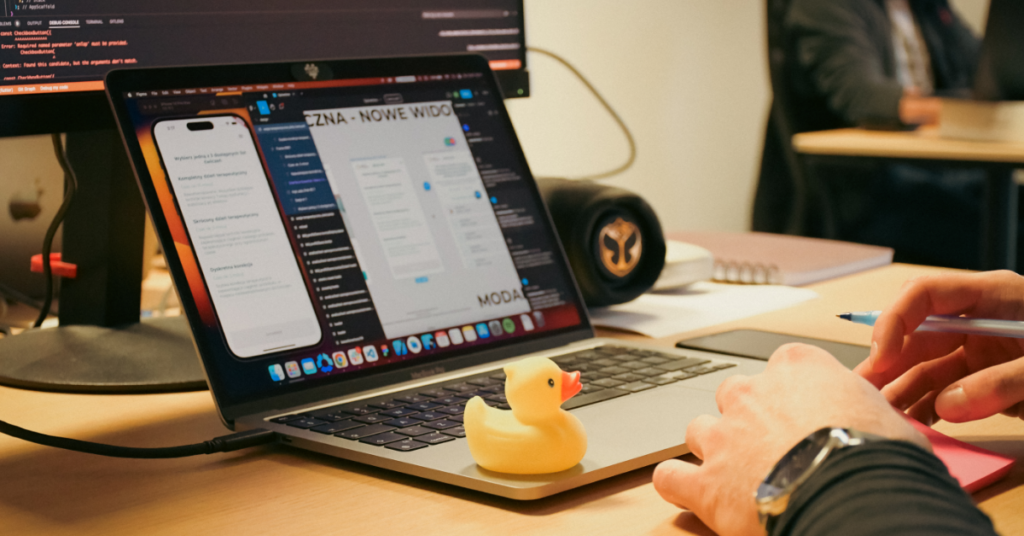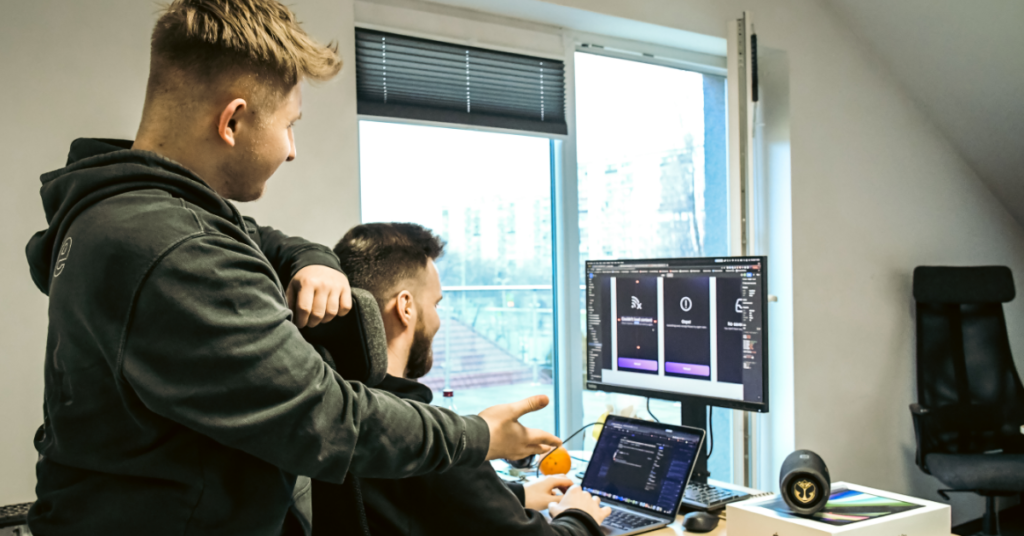There’s no denying that in the digital age, mobile apps have become a must for most companies. With the increasing use of smartphones, businesses are turning to mobile app development to reach their audiences more effectively. Just having an app, however, is not enough. An app must be smooth, functional, visually attractive, and meet user expectations to engage customers truly.
One of the critical decisions in the development process is choosing the right technology stack. Flutter, a relatively new technology, has become increasingly popular recently. In this article, I will discuss Flutter, why it became so popular, and why it is considered future-proof.
Note: This post was last updated for 2024 to reflect the latest trends and insights in Flutter app development.

What is Flutter?
Flutter is an open-source framework created by Google, based on the Dart programming language.
It was officially released in 2018 and allowed users to develop mobile, desktop, and web applications using a single code base. In our opinion, it is the best choice for cross-platform application development, offering security, support, and stability.
Flutter has caught the attention of large companies such as Airbnb, Alibaba, Uber, BMW, eBay, and Google, all of which use it in their mobile apps.
Single Codebase Efficiency
Flutter simplifies the app development process with its single codebase feature. It allows developers to create a single codebase for both iOS and Android platforms, reducing the time it takes to develop an app and the time it takes to market.
A single codebase also minimizes the amount of required testing and maintenance and increases business efficiency and productivity.
Ideal for MVPs
Flutter is suitable for companies of all sizes but especially beneficial for startups with tight budgets that want to start with an MVP (Minimum Viable Product). With low development costs and reduced time-to-market, Flutter quickly develops an MVP and gathers quick consumer feedback.
Flutter also provides all the tools needed for application development and integrates well with prominent cloud platforms such as Firebase and AWS, offering features like analytics, authentication, hosting, and storage.
Simplified customization
Thanks to a single code base, apps developed with Flutter are highly flexible, allowing changes and updates to be immediately visible on iOS and Android.
Using the Hot Reload feature, it is possible to make code changes while the app is running, making improvements verifiable almost at the same time. This reduces maintenance costs, allowing business owners to focus on other aspects of their organization.
Flutter Forward 2023 Recap
For developers and businesses looking to the future of cross-platform app development, the Flutter Forward 2023 event was a turning point. This event showed that Flutter is committed to leading the way in four important areas:
- Graphics performance,
- Web and mobile integration,
- Adaptability to new architectures,
- Improving the developer experience.
Elevating Graphics Performance with Impeller and Material 3
The launch of the Impeller project and the switch to Material 3 showed that Flutter is serious about changing the way cross-platform development handles images.
Impeller, a complete redesign of Flutter’s rendering engine, aims to get rid of motion lag so that complex animations can run smoothly. This move, especially since it’s still in beta for iOS, points to a future where Flutter apps provide incredibly smooth user experiences. Tim Sneath, the visionary behind Flutter and Dart at Google, says that this is the start of making a “silky smooth” rendering engine that is perfectly suited to Flutter’s needs.
The release of Material 3 in Flutter 3.7, which is an improvement over Material 2, marks a strategic move toward a design language that is more flexible and open to everyone. A new standard for design tokens makes this update better for UI/UX design by making it more flexible and easy to use.
Seamless Web and Mobile Integration
Flutter’s progress in making Dart work better with other platforms and programming languages marks the start of a new era of development ecosystems that are all linked together.
This is shown by the element embedding feature, which lets web developers easily add Flutter parts to apps that are already running. This new feature makes the development process more unified between web and mobile and makes Flutter more appealing as a platform that can work with a wide range of programming languages.
Improvements to tools like FFIgen for iOS and JNIgen for Android make it easier for Dart code and native APIs to talk to each other. This speeds up development and lets you use features that are only available on specific platforms. These improvements are very important for making Flutter a top choice for developers who want to develop cross-platform apps that work together and on different platforms.
Pioneering Support for New and Emerging Architectures
Flutter’s move into WebAssembly (Wasm) and the RISC-V architecture shows that it thinks about speed and compatibility in a forward-looking way.
The look into WebAssembly, which is known for being fast and efficient, especially when dealing with a lot of data, shows how Flutter wants to use cutting-edge technologies to make web apps run better.
Also, Flutter’s support for RISC-V, an open standard architecture, makes the framework more useful and opens up interesting new possibilities in areas like wearable tech.
Enhancing Developer Experience with Dart 3 Alpha and Flutter News Toolkit
The release of the Dart 3 alpha is a big step forward in Flutter’s plan to make the developer experience better.
With features like 100% sound null safety and the addition of records and patterns, Dart 3 makes code less complicated and more productive, so writers can spend more time coming up with new ideas and less time fixing bugs.
The Flutter News Toolkit further exemplifies Flutter’s versatility, offering media and content publishers a comprehensive suite of tools for mobile application development.

What changes will 2024 bring to Flutter?
As we look ahead to this year, the Flutter team has made a long-term plan showing their commitment to new ideas, quality, and performance.
Based on the official roadmap that was shared for transparency’s sake, several key areas have been marked where significant steps forward are likely to happen. These projects aim to improve the Flutter framework and engine, improve the developers’ experience, support new technologies, and keep Flutter at the top of cross-platform development.
Here’s what we can expect:
Core Framework & Engine Updates
- Impeller Enhancements: Continued focus on quality and performance with significant advancements in Impeller. This includes completing the iOS migration to Impeller by removing the Skia backend and expecting support for Vulkan and OpenGLES on Android, with an opt-out for Skia.
- Material 3 Full Support: Completing the effort to fully support Material 3, ensuring Flutter apps can leverage the latest material design guidelines for sleek, modern UIs.
- Framework Generalization: This is an investigation into generalizing the core framework to meet design expectations on Apple devices better, catering to specific UI elements like app bars and tab bars.
- BlankCanvas Development: Continued work on the blankcanvas project, although details on its specific focus remain to be seen.
Mobile Platform Enhancements
- Multi-View Support Extension: In 2024, we will extend this capability to both Android and iOS platforms, building on the initiative started in 2023 to support multiple Flutter views.
- Modernization and Interop Improvements: Modernizing iOS offerings to support the latest Apple standards and improving interop for native code integration. This includes completing work to support invoking Objective-C code from Dart, investigating Swift code invocation, and enhancing support for Java and Kotlin on Android.
- Hybrid App Support: Focusing on better support for hybrid apps that contain both Flutter and native platform code/UI, aiming to improve performance, overhead, and developer ergonomics
Web Platform Focus
- Performance and Quality: Efforts to reduce application size, enhance multi-threading usage, and improve app load times. CanvasKit is slated to become the default renderer, with improvements in text input and SEO support.
- Dart to WasmGC: Completing the compilation of Dart to WasmGC to support Wasm compilation of Flutter web apps, alongside a new JS interop mechanism.
Desktop Platform Development
- Platform Views on macOS and Windows: Progress towards supporting platform views, enabling features like webviews.
- Linux Focus: GTK4 support and accessibility improvements.
- Multiple Views and Windows: Continuing work on supporting multiple views from one Dart isolate, aiming for multiple windows rendering from one widget tree.
Ecosystem and Tooling Innovations
- AI Framework Collaboration: Planning collaborations with AI frameworks to usher in a new era of AI-powered Flutter apps.
- Quality Over Quantity: Focus on enhancing the quality of existing flutter.dev plugins rather than expanding the set and supporting community initiatives like Flutter Favorites.
- Casual Gaming: Continued support for building casual games with Flutter in collaboration with the Flame community.
- AI-Assisted Programming: Integrating AI solutions for core programming tasks and exploring integration with design tools.
Programming Language Enhancements
- Macros in Dart: Completing the assessment for supporting macros in Dart, potentially shipping the first phases or reconsidering based on architectural evaluations.
- Language Feature Improvements: Exploring syntax changes to reduce verbosity and enhance statically checked variance alongside increased pluggability and extensibility for Dart.
These goals for Flutter in 2024 show a dedication to improving the framework’s main features and keeping it at the top of cross-platform development trends. Flutter is expected to keep improving, giving developers more tools, freedom, and chances to make apps that work well on all devices and are attractive to use.
Contact
Do you want to learn more about Flutter in 2024?
Flutter is the answer to the most demanding needs
In conclusion, Flutter is a popular and future-proof choice for mobile app development, offering a single code base, cost-effective MVP development, and simplified customization.
At Applover, we are sure that with its focus on cross-platform development, custom user interfaces, continuous improvement, and the potential for IoT app development, Flutter is well-positioned to meet the demands of the mobile app development industry in 2024.

